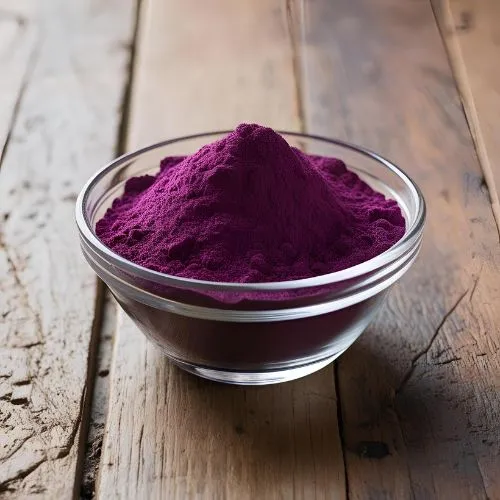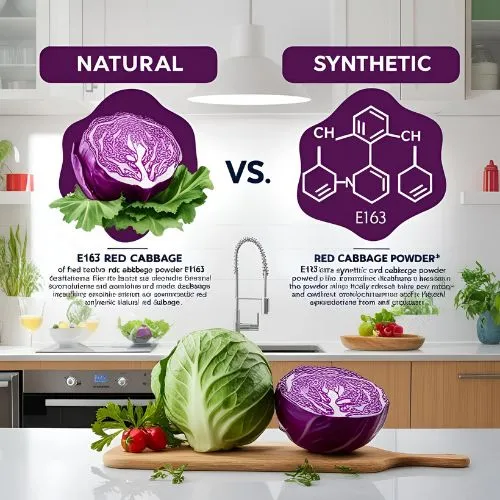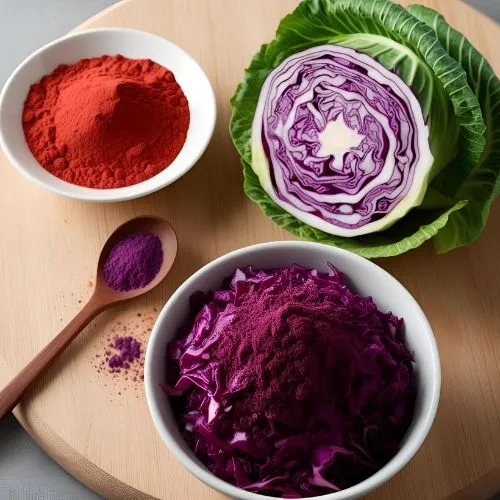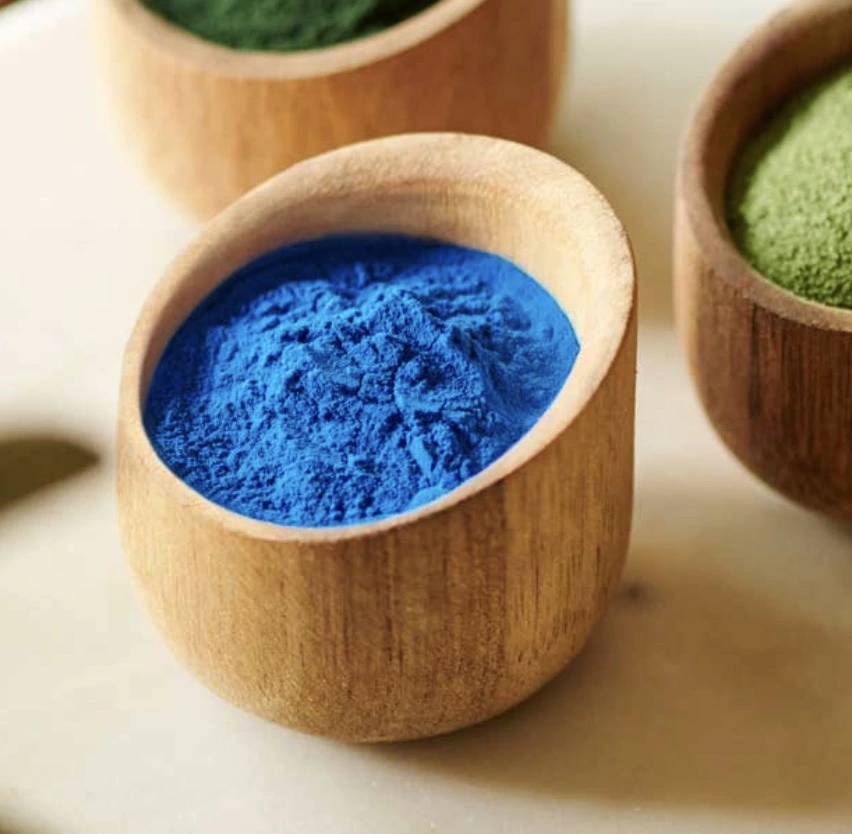How Does E163 Red Cabbage Powder Compare to Artificial Colors?
In the world of food coloring, natural alternatives are gaining traction as consumers become more health-conscious and environmentally aware. One such natural option that's making waves is Red Cabbage Powder E163. This vibrant, plant-based coloring agent is derived from red cabbage and offers a host of benefits over artificial colors. Let's delve into how E163 Red Cabbage Powder stacks up against synthetic alternatives and why it might be the superior choice for food manufacturers and consumers a like.

Natural vs. Synthetic: The Benefits of E163 Red Cabbage Powder
When it comes to food coloring, the debate between natural and synthetic options has been ongoing for years. E163 Red Cabbage Powder, a natural coloring agent, offers several advantages over artificial alternatives:
Clean Label Appeal
In an era where consumers are scrutinizing ingredient lists more than ever, Red Cabbage Powder E163 shines. Its natural origin allows food manufacturers to create products with cleaner labels, appealing to health-conscious consumers who prefer recognizable, plant-based ingredients. Unlike artificial colors that often have chemical-sounding names, E163 can be listed simply as "red cabbage extract" or "vegetable color," which resonates better with today's discerning shoppers.
Versatility in Application
E163 Red Cabbage Powder demonstrates remarkable versatility across various food and beverage applications. Its ability to create a spectrum of hues ranging from pink to purple to blue, depending on the pH of the food matrix, makes it an invaluable tool for food formulators. This pH-dependent color-changing property allows for creative and dynamic visual effects in products, something that artificial colors struggle to replicate with the same naturalness.
Stability and Performance
While some may assume that natural colors are less stable than their synthetic counterparts, Red Cabbage Powder E163 has proven to be surprisingly robust. It exhibits good stability in various processing conditions, including heat treatment and exposure to light. This stability ensures that the vibrant colors remain consistent throughout the product's shelf life, meeting both manufacturer and consumer expectations for visual appeal.
Sustainability Credentials
As sustainability becomes an increasingly important factor in consumer purchasing decisions, Red Cabbage Powder E163 stands out. Derived from a renewable plant source, it has a lower environmental impact compared to synthetic colors, which often rely on petrochemical-based ingredients. This aligns well with eco-conscious brands and consumers looking to reduce their carbon footprint through their food choices.

How E163 Red Cabbage Powder Boosts Food Safety and Appeal?
Beyond its natural origin, E163 Red Cabbage Powder contributes significantly to food safety and enhances the overall appeal of products. Let's explore how this natural coloring agent achieves these crucial aspects:
Enhanced Safety Profile
One of the primary concerns with artificial food colors has been their potential health risks, particularly for children. Some synthetic dyes have been linked to hyperactivity and other behavioral issues. Red Cabbage Powder E163, being derived from a vegetable source, offers a safer alternative. It's free from the controversial azo compounds found in some artificial colors and has a long history of safe consumption as part of the human diet.
Antioxidant Properties
Unlike artificial colors that are purely aesthetic, Red Cabbage Powder E163 brings additional health benefits to the table. The anthocyanins responsible for its coloring properties are also potent antioxidants. These compounds have been associated with various health benefits, including anti-inflammatory effects and potential protection against certain chronic diseases. This dual functionality as both a colorant and a bioactive ingredient adds value to food products, aligning with the growing consumer demand for functional foods.
Visual Appeal and Consumer Perception
The colors derived from Red Cabbage Powder E163 are often perceived as more natural and appealing by consumers. The subtle variations in hue that can occur due to natural factors can actually enhance the perception of "authenticity" in food products. This natural variability, far from being a drawback, can be leveraged to create unique visual identities for brands, setting them apart in a crowded marketplace.
Is E163 Red Cabbage Powder a Healthier Alternative to Artificial Colors?
The question of whether E163 Red Cabbage Powder is a healthier alternative to artificial colors is multifaceted and requires a nuanced examination of various factors:
Nutritional Value
While artificial colors are purely aesthetic additives with no nutritional value, E163 Red Cabbage Powder brings more to the table. The anthocyanins in red cabbage extract are not just pigments but also bioactive compounds with potential health benefits. These include antioxidant and anti-inflammatory properties, which may contribute positively to overall health when consumed as part of a balanced diet. This inherent nutritional aspect gives E163 a clear advantage over synthetic colors from a health perspective.
Allergenicity and Sensitivity
Artificial colors have been associated with allergic reactions and sensitivities in some individuals, particularly children. Several studies have linked certain synthetic dyes to behavioral issues and hypersensitivity reactions. Red Cabbage Powder E163, being derived from a common vegetable, is generally well-tolerated and less likely to cause such adverse reactions. This makes it a safer choice for a broader range of consumers, including those with sensitivities to artificial additives.
Long-term Health Implications
The long-term health effects of consuming artificial colors are still a subject of ongoing research and debate. While regulatory bodies have established safety guidelines for approved artificial colors, some health professionals and consumers remain skeptical about their long-term impact on health. Red Cabbage Powder E163, with its long history of human consumption as part of whole red cabbage, offers a more reassuring profile in terms of long-term safety. The familiarity and natural origin of this coloring agent provide a level of comfort that artificial alternatives struggle to match.
Impact on Gut Health
Emerging research suggests that artificial food additives, including some synthetic colors, may negatively impact gut microbiota. This is a growing concern as we learn more about the crucial role of gut health in overall well-being. E163 Red Cabbage Powder, being derived from a vegetable source, is not only less likely to disrupt gut flora but may even offer prebiotic benefits. The fiber content in red cabbage, which may be present in small amounts in the powder, could potentially support beneficial gut bacteria.

Conclusion
As we've explored throughout this article, E163 Red Cabbage Powder offers numerous advantages over artificial colors in terms of consumer appeal, versatility, safety, and potential health benefits. Its natural origin aligns perfectly with current trends towards cleaner labels and more transparent food production. While it may require some adjustments in formulation and processing compared to synthetic alternatives, the benefits it brings to both manufacturers and consumers make it a worthy consideration for any food product requiring coloration.
If you're interested in learning more about Red Cabbage Powder E163 or other natural plant extracts for your food and beverage applications, don't hesitate to contact us at info@yanggebiotech.com. Our team of experts is ready to help you navigate the world of natural colors and find the perfect solution for your products.
References
1. Martins, N., Roriz, C. L., Morales, P., Barros, L., & Ferreira, I. C. (2016). Food colorants: Challenges, opportunities and current desires of agro-industries to ensure consumer expectations and regulatory practices. Trends in Food Science & Technology, 52, 1-15.
2. Sigurdson, G. T., Tang, P., & Giusti, M. M. (2017). Natural colorants: Food colorants from natural sources. Annual Review of Food Science and Technology, 8, 261-280.
3. Gebhardt, B., Sperl, R., Carle, R., & Müller-Maatsch, J. (2020). Assessing the sustainability of natural and artificial food colorants. Journal of Cleaner Production, 260, 120884.
4. Giusti, M. M., & Wrolstad, R. E. (2003). Acylated anthocyanins from edible sources and their applications in food systems. Biochemical Engineering Journal, 14(3), 217-225.
5. Feketea, G., & Tsabouri, S. (2017). Common food colorants and allergic reactions in children: Myth or reality? Food Chemistry, 230, 578-588.

Based on your location and order quantity, you will have the opportunity to receive a limited time free shipping promotion!

Who we are


